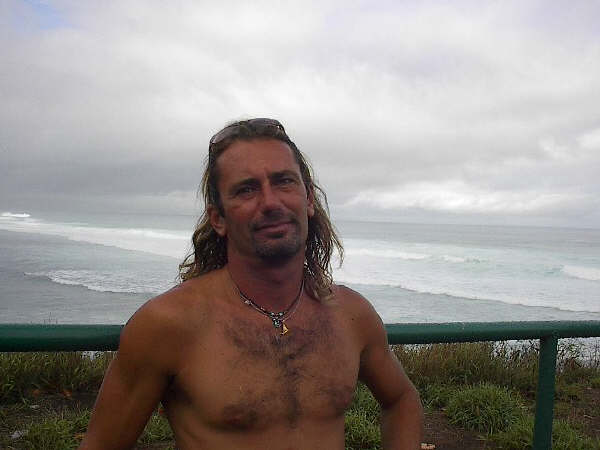Lahaina side provided some really good waves again yesterday morning. The photo of the day is a frame grab from a video that Jason Hall posted on Instagram. I wish I could share the whole video, but they make it hard to embed. It is a set at Olowalu, which I referred in my early morning beach report as "light offshore, but flat when I drove by".
Also, the report started like: "west side looked knee to waist from the road. Lahaina has bigger sets as usual". Since there were occasional overhead sets in Lahaina, I feel compelled to specify that:
1) my west side reports are based on what I see from the road while I drive towards Lahaina. I do not stop at each spot and watch it for 10-15 minutes.
2) unless I specify an upper limit (like up to head high), bigger that waist high means bigger than waist high and that can be belly high or double overhead!
3) I tend to be conservative. I hate to create expectations of a particular size and then have you guys drive all the way and find it smaller. Also, when I say it's waist high, I mean that most of the waves are waist high. But that means that there's also bigger sets, of course and every single time, even if I don't specify that.
In other words, take those reports with a grain of salt. And, I write this against my interest of generating traffic for this blog, if your connection speed allows you, ALWAYS look at the webcams too.

4am significant buoy reading
South shore
W
2.6ft @ 13s from 131° (SE)
0.7ft @ 18s from 45° (NE)
SW
2.1ft @ 12s from 160° (SSE)
SE
2.2ft @ 13s from 177° (S)
Still energy from the south at the outer buoys in the 12-13s range. That is a period that many spots of the south shore prefer over longer ones.
Let's take the popular Thousand Peaks as an example. Over there 2f 18s would make for shoulder to over head high closeouts. 2f 12s would make knee to belly high peeling a-frames.
This also gives me the opportunity to repeat one more time that the size in feet indicated by the buoys has NOTHING TO DO WITH THE HAWAIIAN SCALE. The Hawaiian scale is something so inaccurate, ambiguous, unscientific (and overall dumb) that I don't even want to waste more of my time commenting on it.
The size in feet indicated by the buoys is what the open ocean swell is and the size of the breaking waves will depend on:
1) the break itself
2) the period
3) the direction
4) the tide
Guessing the size of the breaking waves at a particular break upon the readings of offshore buoys is something that requires a bit of local knowledge. Not that difficult to build, IMO. You just look at the buoys and at your spot every day for two weeks and you have a pretty good idea of what I'm talking about.
I reported also that .7f 18s reading at the W buoy, because I believe it's an indication of a new long period pulse FROM THE SOUTH, that both Surfline and Pat Caldwell predicted based on the WW3 output. I explained many times why the direction appears to be from a completely different direction, but I'll do it again for the benefit of the new readers (and because I have the time this morning, since I have a lesson that only starts at 7am).
The W buoy is also reading 6.7ft @ 8s from 73° (ENE). That's a hefty windswell that I don't report because it isn't "significant" for the south shore waves. It doesn't make waves for the south shore. If anything, it might interfere with the shape of south swells in some spots, introducing a wobble in the lip, but in this case the Haleakala offers plenty protection from it, since it comes from a direction of 73 degrees (you can definitely rely on that direction a lot more).
The presence of that heavy almost 7f oscillation every 8 seconds, makes it very hard for the buoy to detect the direction of a much weaker and inconsistent open ocean ground swell like 0.7f 18s in this case. The indicated direction is hence completely wrong. If there was such a swell from 45 degrees, it would most definitely appear at buoys like North or Mokapu (and it doesn't). Also, there was absolutely no fetch from the NE in the past few days that would make such a long period swell.
Sorry about the river of words, I got a bit caught up in the explanations. I hope some of the readers appreciate it.
North shore
Pauwela
4.8ft @ 8s from 66° (ENE)
Windswell only on the north shore. No 18s from the NE readings at Pauwela either...
Wind map at noon. Once again not particularly strong and that's because of the reason explained below.

I explained that to a Hi-Tech rental customer just yesterday. Based on the Windguru table below, he thought that Friday was going to be the windiest day of his stay. Instead I told him to hover with the mouse over the arrow that indicated the direction and get a number. In today's case, the direction shows 60 degrees and that doesn't get particularly amplified by the Haleakala. So those 16-20 knots might easily remain such. Take Sunday instead. The direction is around 90 degrees and that can potentially make those 9-12 knots become 20+ and very gusty. The more east in the offshore direction of the trades, the more they get amplified and become gusty on the north shore. When you pass 90 degrees, they only get amplified east of Hookipa and are not goot for sailing downwind of it.
Another important thing you want to look at on that map is the cloud cover (red circles). The clearer the sky, the stronger the thermal component will be.

North Pacific only shows the windswell fetch.

With a good timing now the South Pacific only offers a Tasman Sea fetch, while the SSE one has become totally negligible.

Some clouds, but nothing major.

PS. I put the following two labels on this post for easy future references:
- how to read the windguru table
- guidelines for interpreting the buoy readings









No comments:
Post a Comment